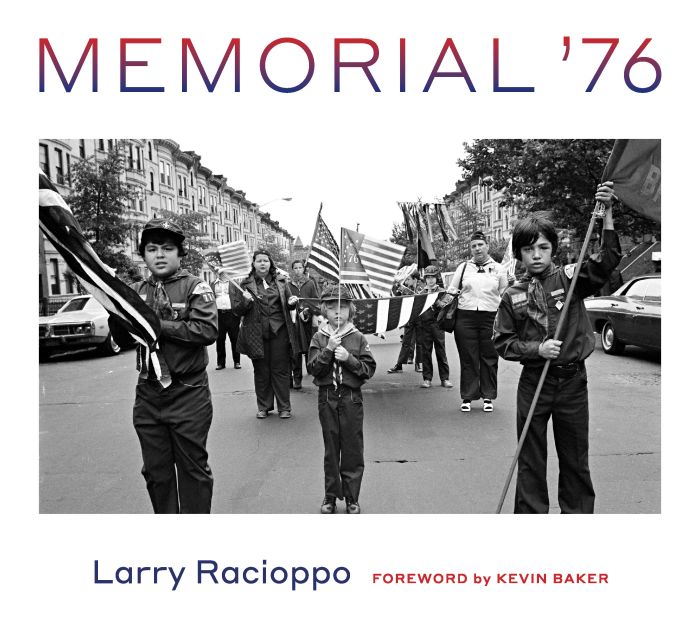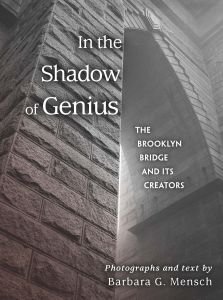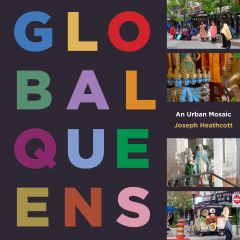Save 25% plus free shipping during our Winter Sale! Use promo code JOY2025. Expires 1/5/26.
Memorial '76

This book can be opened with

A photographic time capsule of a pre-gentrified South Brooklyn Memorial Day parade, 80 photographs that preserve a neighborhood and a moment now largely vanished
On Memorial Day 1976, weeks before the nation marked its 200th birthday, South Brooklyn filled with flags, brass bands, scout troops, and families along Fifth Avenue. A vivid portrait of South Brooklyn in 1976, patriotic, diverse, and on the cusp of change, this book gathers more than fifty photographs by lifelong New Yorker Larry Racioppo, who left his nearby apartment that morning to record the pageantry of “America’s Birthday.” What he captured is a timeless record of Brooklyn’s people and pride during the Bicentennial year, now published as the United States marks the 250th anniversary of the Declaration of Independence in 2026.
Italian-, Puerto Rican-, Irish-, and Polish-American neighbors appear as marchers and as spectators on stoops, at bar windows, inside ethnic clubhouses, and in second-story windows. The pictures register storefronts and fraternal halls, homemade floats and uniforms, and the easy mingling of ritual and everyday life that defined the blocks then. Seen together, they preserve a local parade and the social world around it, including mom-and-pop businesses, clubs, and gathering places, at a moment when the city and neighborhood were about to change.
A foreword by novelist and historian Kevin Baker situates the work within the civic culture of 1970s New York. Racioppo’s Afterward traces the 1976 route from Green-Wood Cemetery to the Old Stone House Park and reflects on five decades of photographing Memorial Day parades, from South Brooklyn to Rockaway, as generations of veterans and families pass the tradition along.
Part civic history and part street-level portrait, Memorial ’76 expands Racioppo’s acclaimed chronicle of New York’s neighborhoods, standing alongside Brooklyn Before and Here Down on Dark Earth, and offers scholars and general readers an essential visual archive of working-class pride, urban ritual, and the everyday textures of a Brooklyn that has largely disappeared.
Larry Racioppo is the Robert Frank of Brooklyn: a witness-with-camera to the city that once was, and the one that would be. We should all give thanks that he has taken the trouble to record it over so many years.—The late Tom Robbins, NYC Journalist
Simply put, to do history is to tell the story of change over time. Larry Racioppo's photographs allow us all to be historians; though we all may notice different changes, and recall different times, everyone who picks up this book will be left marveling at the infinite stories that Brooklyn has to tell.—Dominique M. Jean-Louis | Chief Historian, Center for Brooklyn History | Brooklyn Public Library




